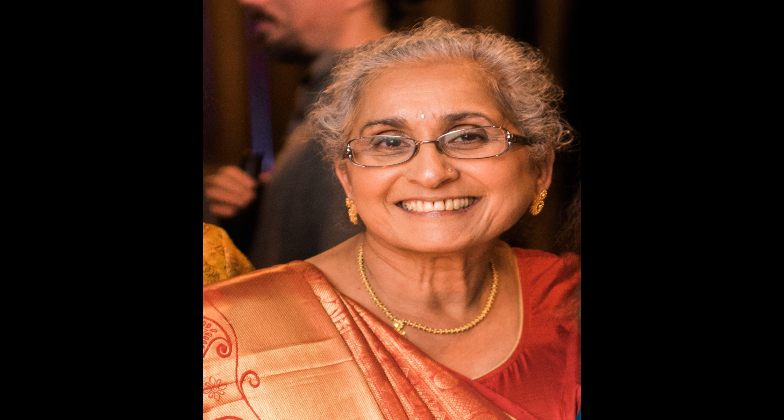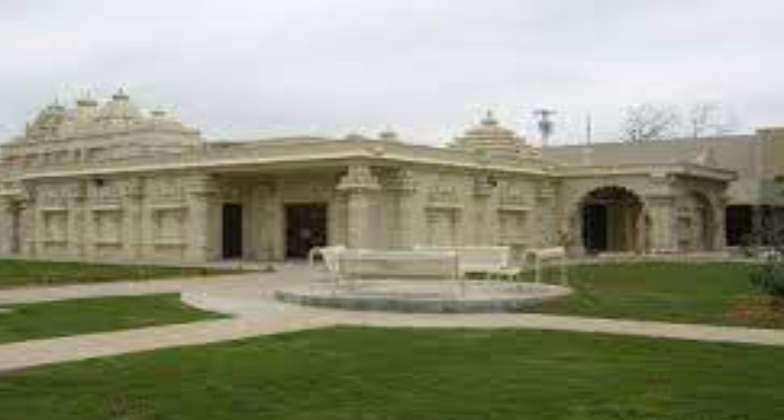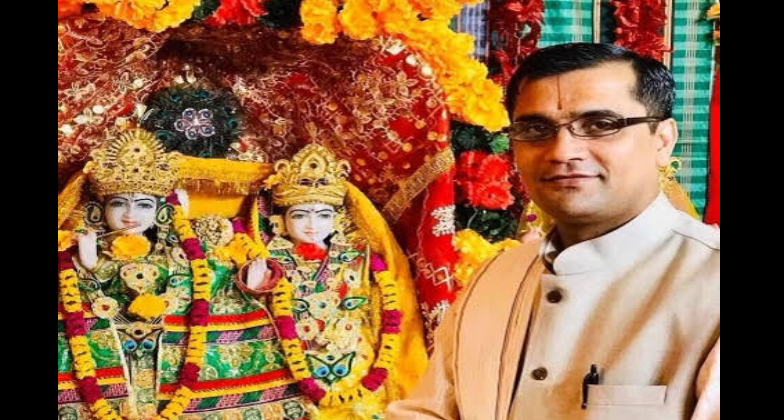Priests
Top South Asian Wedding Priests & Officiants in Texas - Dallas, Houston, Austin
South Asian weddings are a vibrant celebration of centuries-old traditions. Notably, Hindu wedding ceremonies are embossed in culture. In traditional Indian weddings, you will want a priest or pandit, also known as a wedding officiant, to conduct the pre-wedding rituals and wedding ceremonies.
In a Hindu wedding, it is customary to have open fire or havan at the mandap. Some venues may not be open to a ceremonial fire. Certain ballrooms do not allow open flame because of the fire code. Other venues have time restrictions. Make sure to discuss the traditions of your wedding with the venue coordinator in advance before proceeding with the booking.
With the wedding date and venue arrangement in place, we’ve included several priests and officiants on The Desi Bride to help you seal the deal with your partner.
FAQ
How do I arrange for a wedding officiant for a Hindu wedding?
If you or your relatives don’t have a family pandit, then you can contact the nearest / local temple with details of the wedding date and venue to understand your options. While a contract or a written document may not be necessary, you should ask about confirmation procedures, advance deposits required, and the cancellation or postponement process. Usually, there will be at least two meetings to finalize the priest. Always remember to be courteous in your meetings.
How do I choose a priest?
Priests can be humorous, traditional, and informed. It's helpful to determine your priorities and then select the right officiant for you.
- Knowledgeable: Choose someone who has sound knowledge of the customs and traditions of your family. It’s helpful to work with someone who either already understands your customs or will quickly understand and figure out how to weave them in. South Indian and North Indian weddings have distinct rituals, and even with those splits, a Gujurati, Rajasthani, and Punjabi wedding may still have different traditions.
- Professional: A courteous and professional pandit will add to the ambiance of the wedding. You will want a priest who is fully prepared, communicates with all of the pooja samaagri needed, and arrives on time in order to ensure a hassle-free wedding.
- Bilingual: A bilingual pandit will help the guests to understand the essence of Sanskrit shlokas and the meaning behind the customs. Some of your non-Indian guests may be intrigued by the colors and the rituals. A priest who speaks both Hindi and English can help them understand the Indian culture better.
- Humorous: At times, the many traditions may get a bit overwhelming or you may fumble with your Sanskrit. At such times, a priest with a sense of humor is no less than a blessing. So, choose a priest who is not very formal and has an easy demeanor with whom you and your family are comfortable.
- Experienced: Ask for a Pandit who has prior experience in Gujarati / Marathi / Punjabi weddings or South Indian weddings or alternately fusion or interracial weddings. If you have family traditions that you wish to follow then make sure to communicate these to your priest before the wedding day.
Note: While booking a priest, make sure you mention any pre-wedding or post-wedding pujas that you want him or her to conduct.
What questions should I ask the priest before the wedding?
No matter which trends or ceremonies you follow, every wedding tends to be different. This holds true even for the priest. You may incorporate the following questions along with other questions, before the wedding:
- If you are getting married in a temple, then you may ask whether you would be allowed to take photographs at the temple premises. Some temples may not allow photography or videography.
- For a temple wedding, ask the priest about décor possibilities also, mainly floral decorations; alterations in décor that you are allowed to do; the charges for the décor updates; and if you can see the décor beforehand.
- Whether you are throwing confetti or rice, ask if it is allowed inside or outside of the temple.
- Can we choose our own vows and rituals? Contemporary weddings may call for accommodation of certain elements or modifications of traditional customs, especially in the case of interfaith weddings. Discuss with the officiant and your families about which customs you wish to follow, modify or eliminate.
- Can the same customs be followed if this is my/our second marriage or remarriage?
- Discuss the charges (as explained in this section)
- What pooja samaan is the priest responsible and what items should the family / couple arrange for?
- What are the auspicious dates and times available for the wedding? Can we opt for our own choice of date and timing instead of following the mahurat?
How long does a Hindu wedding ceremony last?
While traditional Hindu weddings could easily be 3-4 hours, contemporary weddings can be cut down to 1-2 hours, depending on the rituals. In the U.S, often Hindu weddings start in the morning or early afternoon and end in time for lunch.
What are the charges for a Hindu wedding ceremony?
The charges for officiating a wedding ceremony may vary but here are a few helpful pointers on what to expect:
- Pandits may charge $1000-$3000 for a ceremony that lasts up to 2 hours. In Hindu weddings, it is also customary to offer “dakshina” to the pandit in the form of clothing and cash. Discuss these details with your priest or the temple, so you are prepared.
- For destination weddings, you may have to pay an additional amount for travel and accommodation of the priest. Even for local weddings, make sure to understand if you need to help the priest with commute - either having someone drop off / pick the priest up or other accomodations.
- Instead of charging a fee for officiating the ceremony, some places of worship suggest a donation amount.
- Discuss the charges for pre-wedding pujas as well as the wedding ceremony as there might be a separate cost for both.
- Understand how much of an advance or deposit needs to be paid to secure your wedding date.
Do I have to arrange items for the puja ceremony?
For the grah-shanti havan or ganesh puja and the main wedding ceremony, your priest may give you a list of items. Discuss with your priest if he or she can arrange for the items or whether you are responsible. It will be difficult to find a havan kund, wood for the ceremonial fire, or a special type of coconut last minute, so may sure you and the officiant are prepared.
How should I prepare for the pandit’s meals?
Usually, the pandit’s bhoj, prasad, or meal is a pure vegetarian fare without any onions or garlic accompanied by something sweet or even prasad from the ceremony. Make sure you understand the specifications and talk to your caterer about special prep.
When can we expect you (the panditji) at the venue?
Usually, the pandit reaches the venue a couple of hours before the wedding in order to set up the havan etc. Make sure a family member, close friend, or wedding planner is informed about the pandit’s arrival so that someone can greet the priest personally and guide him or her to the mandap. For destination weddings, the priest has enough time to arrange everything if you are working with an auspicious ceremony time or shubh mahurat based on planetary positions.
Which rituals will the priest perform at a Hindu wedding?
The priest will be in charge of conducting the following rituals, but you should always let him or her know of any additional pujas or rituals.
Pre wedding
- Ganesh pooja or sundar kand
- Mangni or engagement
- In addition, a priest may also be required for mehendi (henna) or chooda ceremony where the bride wears red bangles given to her by her maternal uncle
Wedding
- Havan or sacred fire
- Jaimala or exchanging of garlands, kanyadan (giving the bride away), gathbandhan or tying wedding knot, mangalpheras or saptapadi (walking around the fire and taking seven vows) and applying sindoor or red powder on the bride’s center parting of hair by the groom.
What are the main elements or rituals of a North Indian Hindu wedding?
Baraat: Groom’s Procession
The groom, surrounded by his family & friends, makes his way to the bride’s family & friends on an elephant, dancing to the beat of a dhol (drum).
Var Aagman & Milni: Welcoming the groom and his family & friends
The groom and his family are welcomed by the bride’s family. The bride’s mother gives him blessings and escorts him to the Mandap.
The groom leaves his shoes outside of the Mandap; The bride’s cousins, siblings, and friends try to steal his shoes and the groom’s side tries to stop them. If the bride’s side succeeds, the groom will have to bribe them (typically with cash!) to get his shoes back.
Kaanya Aagman:The bride’s entry to the wedding ceremony
After the flower girls and bridesmaids enter, the bride is escorted to the mandap with her siblings or uncles.
Hastmilap & Kanya Daan: Giving away the bride
The bride’s parents pour sacred water, allowing it to flow through their fingers onto her hand into the groom’s hand, signifying the couple’s bond be strong and everlasting. In the kanya daan, the bride is given away by her parents to the groom, requesting for him to accept their daughter as his equal partner.
Jai Mala: Exchange of garlands
The bride and groom exchange floral garlands to signify mutual respect & love for each other, promising to share their life together.
Madhuparkam: An offering of sweet rice
The parents bless the couple, and the couple’s hands are filled with rice, signifying unity, prosperity, and happiness.
Agni Poojan: Calling Lord Agni as witness
The sacred fire is lit to symbolize purity and act as a witness to the union. The bride & groom jointly offer ghee to Agni, the holy fire, to signify the spirit of sacrifice and a lifetime partnership.
Mangal Phera: First steps of a married couple
The bride and groom circle the fire four times. The four circles symbolize the four goals of married life.
- Dharma: Moral & Spiritual Duties
- Artha: Wealth & Prosperity
- Kama: Love & Family
- Moksha: Liberation & Salvation
Saptapadi: Seven vows
Saptapadi in Sanskrit means “seven steps”. The seven steps represent the seven vows the bride and groom make to one another. We promise:
- To fill our hearts with strength and courage;
- To cherish each other in times of sickness, health, sorrow, & happiness;
- To work together to accomplish our dreams and clear obstacles;
- To love and respect each other & our families;
- To raise virtuous & happy children;
- To collaborate to seek a peaceful, healthy, & prosperous life;
- To remain lifelong best friends, honoring our values
Sindoor: Symbol of marriage
The groom places vermillion (red powder) on the bride’s forehead, signifying their union.
Aashirwaad: Newlyweds seek the blessings of family and elders
The bride and groom bow to God, the priest, their parents, & elders who offer blessings to the newly married couple.
Can a pandit officiate an online wedding?
Yes, during these unprecedented times also, a pandit can officiate your wedding on a Zoom call in the presence of witnesses. Just coordinate with your priest and make sure you have the right technology set up to support the virtual wedding. You don’t want to deal with a deal laptop or internet connectivity issues during the wedding ceremony! It might be helpful to have your videographer or someone else be the tech point of contact.
Inter-Faith, Cross-Cultural, Inter-Racial and Same-Sex Weddings
The decision to marry someone is a personal one to you and a sensitive subject. While booking a priest, make sure you are on clear grounds from the start. Here are a few tips to help you broach the subject:
- Ask the priest if he or she will be happy to perform puja at an inter-faith wedding ceremony.
- Run through the ceremony basics with the priest, so you can make any changes to make it relevant to the two of you.
- If the couple wishes to follow rituals of two faiths or have a fusion wedding, talk to the officiant on either hosting two separate ceremonies or how to intertwine the customs of both faiths into a single fusion ceremony.
- Make sure the couple and families are aligned on which ceremonies will be performed. Decide which traditions are important to you and your fiancée. Then, work with the priest to run through the ceremony and finalize the rituals. For instance, traditionally in some cultures, the bride’s parents wash the feet of the groom as he is considered Lord Vishnu just as the bride is considered as Goddess Lakshmi. You may decide that you want to or don’t want this ritual. It is important to candidly discuss with your priest all the traditions and rituals that you, as a couple, wish to follow.
- Same-sex weddings are becoming more common. Some pandits may modify some of the ceremonies of Vedic astrology to accommodate same-sex weddings. Make sure you speak to the officiant to understand how they will modify the ceremony to make it most relevant.
Vedic traditions can be modified and followed by same sex couples, be it Hindu or Jain wedding. Instead of gender-specific rituals, modifications may be made by the officiant to make the wedding ceremony more gender-neutral.
Who are the top Hindu wedding officiants in Texas?
Scroll up or click here to find modern wedding priests for Indian weddings.


